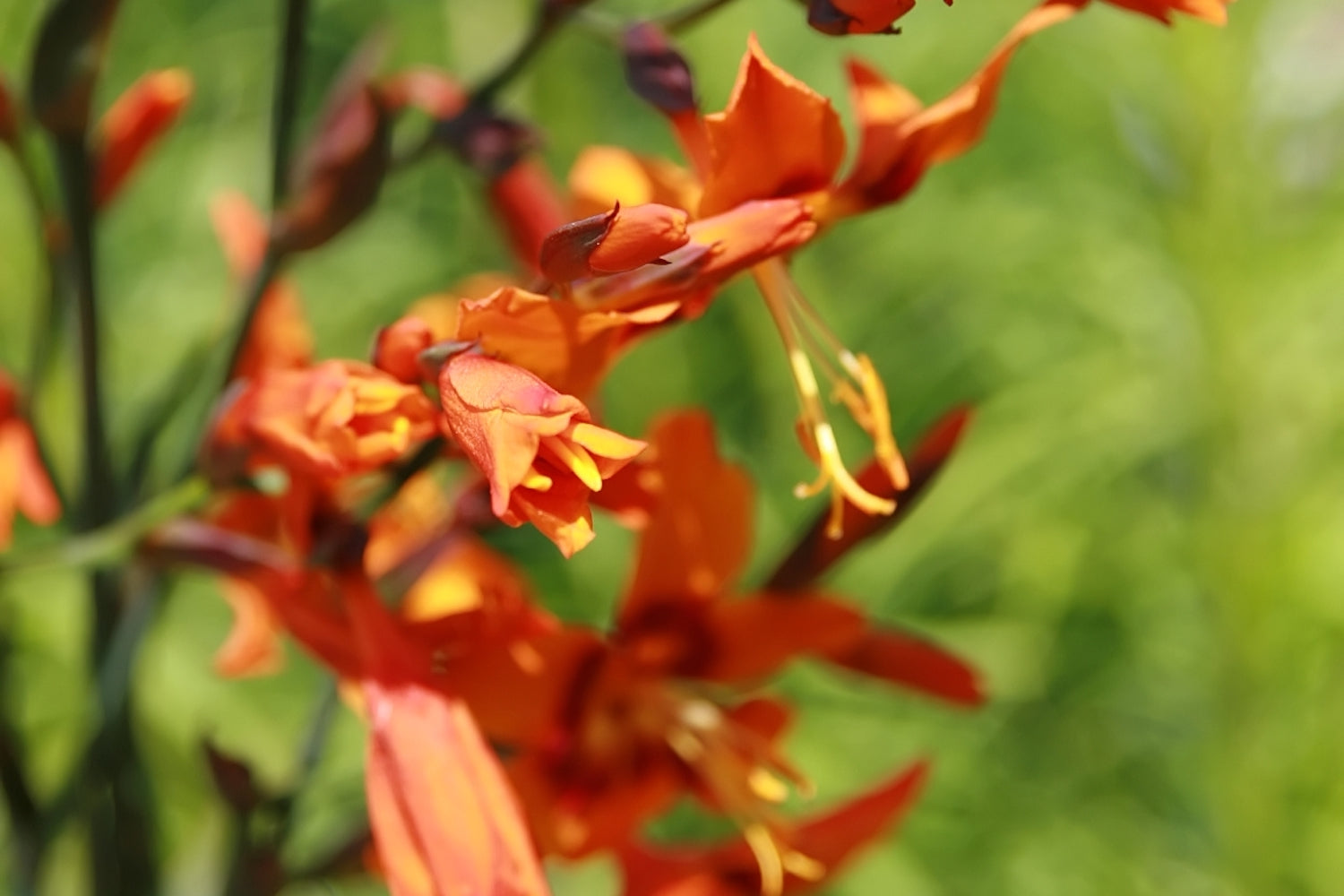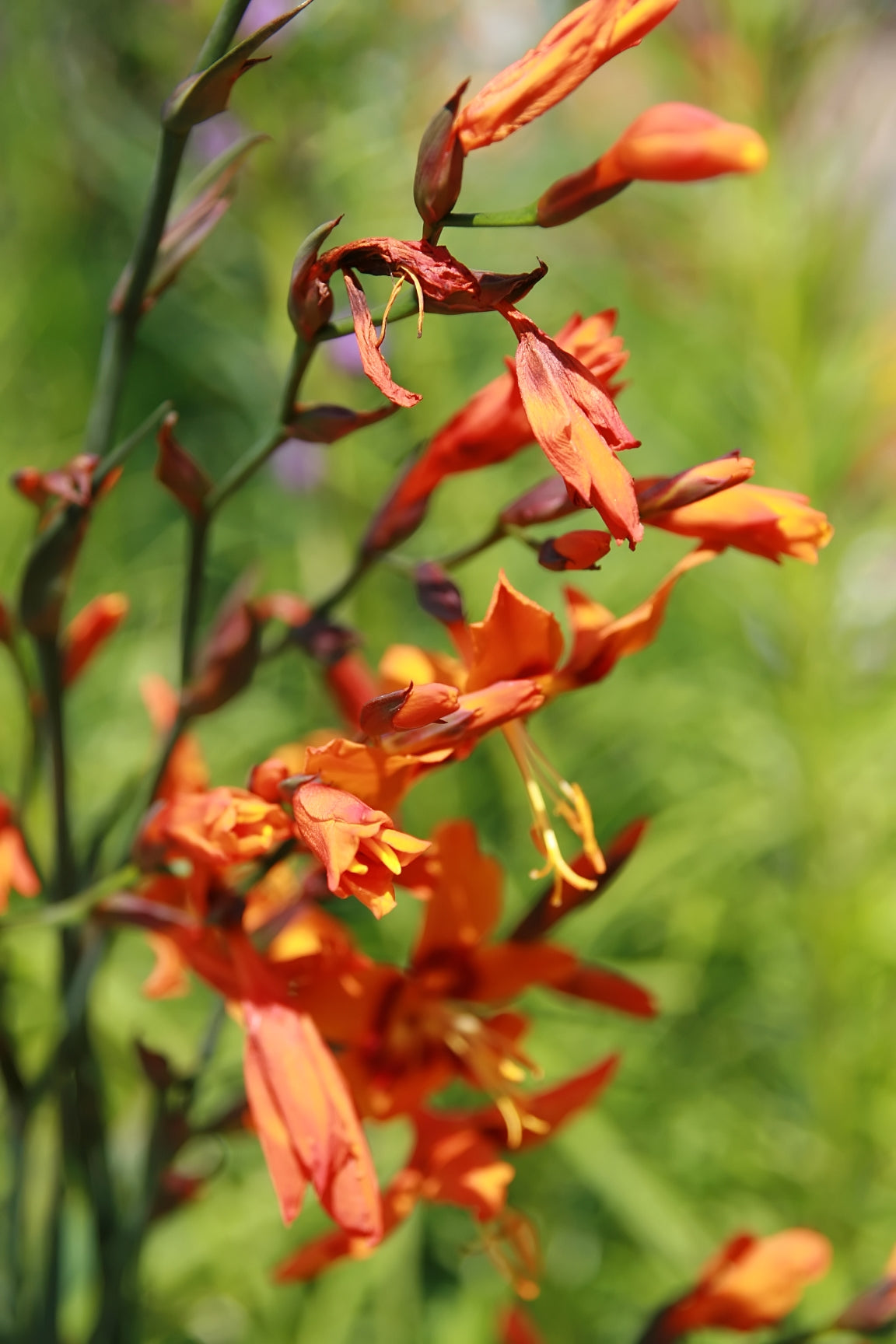Crocosmia x crocosmiiflora 'Emily McKenzie'
Approx. 0.5 litre pot
About this cultivar:
Crocosmia x crocosmiiflora 'Emily McKenzie' was first found in 1951 in a Tyne Valley Garden owned by Emily Mckenzie. A vigorous plant which produces branching stems of rich orange flowers splashed with wallflower red. It is believed by some to have been a natural sport of an older hybrid called 'Comet' (aka 'Malahide Castle' after the Malahide Castle Gardens in county Dublin) which was developed by crossing C. aurea with C. masoniorum. But 'Emily Mckenzie' may also have C. pottsii in its make-up as do the majority of today's Crocosmia hybrids.
In any case, it is a lovely plant – survives 2 weeks as a cut flower.
- Position: Full sun, partial shade
- Soil: Almost any soil, grows well in Ballyrobert
- Flowers: July, August, September
- Other features: Grows well in Ballyrobert
- Hardiness: H4 - Hardy through most of the UK (-10 to -5°C), Fully hardy - grows well in Ballyrobert!
- Habit: Clump forming
- Foliage: Deciduous
- Height: 50 - 75 cm (2 - 2.5 ft)
- Spread: 30 - 60 cm (1 - 2 ft)
- Time to full growth: 2 to 5 years
- Plant type: Herbaceous Perennial, bulb
- Colour: Green, yellow, orange, red
- Goes well with: Ilex (Holly), grasses (such Stipa), Lavendula, Anemone, Rudbeckia, Agapanthus, and Aster. If in doubt: front of a border.
About this genus:
Crocosmia is a wonderful genus of 11 species of easy-to-grow, perennial, summer flowering bulbs from Southern Africa. These iris family members (Iridaceae) produce blazing flower stalks in summer from fast-multiplying underground corms (bulb-like structures).
The common name Montbretia commemorates Antoine Francois Ernest Conquebert de Monbret, a botanist who accompanied Napoleon on his Egyptian campaign from 1798-1801. The genus name Crocosmia is derived from the Greek "krokos" (for saffron) and "osme" (for smell) as the dried leaves smell like saffron when crushed. Crocosmia flowers also attract butterflies and more importantly hoverflies...imporant predators of aphids and other garden pests.
Crocosmia species were first hybridized in the 1870's at the Lemoine nursery in France, and over 400 cultivars have been introduced. However many of the fine old cultivars have sadly been lost to history. The cultivars we have at Ballyrobert vary a bit in habit - some, like the aptly named 'Lucifer', can very vigorous and can take over the garden (if that's what you want) others, like the aptly named Lady Hamilton, are well behaved. As for soil and situation, we find they grow anywhere that isn't too extreme - if you have a very devilish spot in your garden, stick 'Lucifer' in there (pun intended).
Crocosmia flowers are often 'hot' colours; deeply saturated with red, orange, and yellow hues. Colour therefore often dominates thinking when considering plant pairings. In our garden at Ballyrobert we have paired them with Ilex (Holly), grasses (such Stipa), Lavendula, Anemone, Rudbeckia, Agapanthus, and Aster; just take a look at our photos for each cultivar. If in doubt stick in the front of a border!




